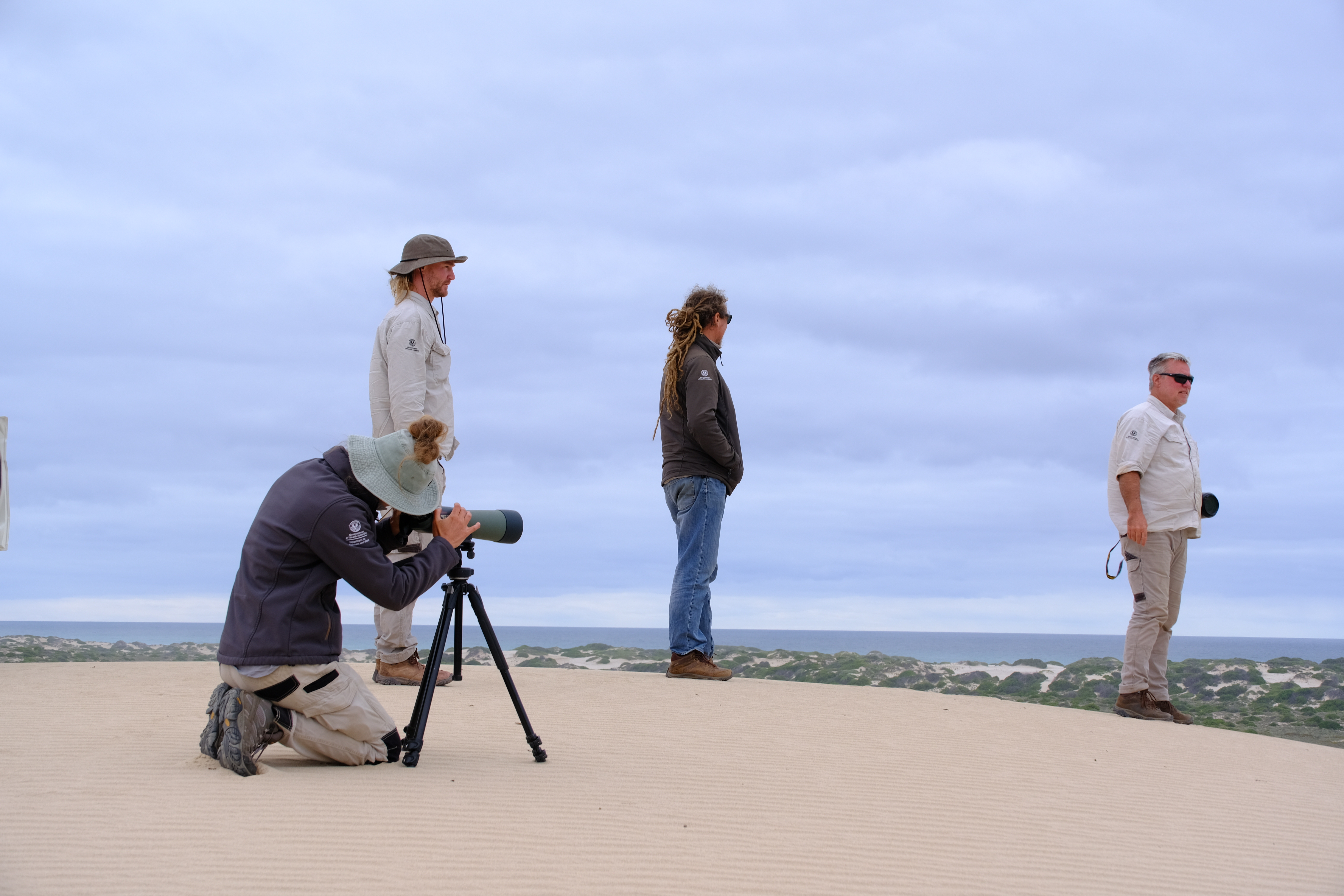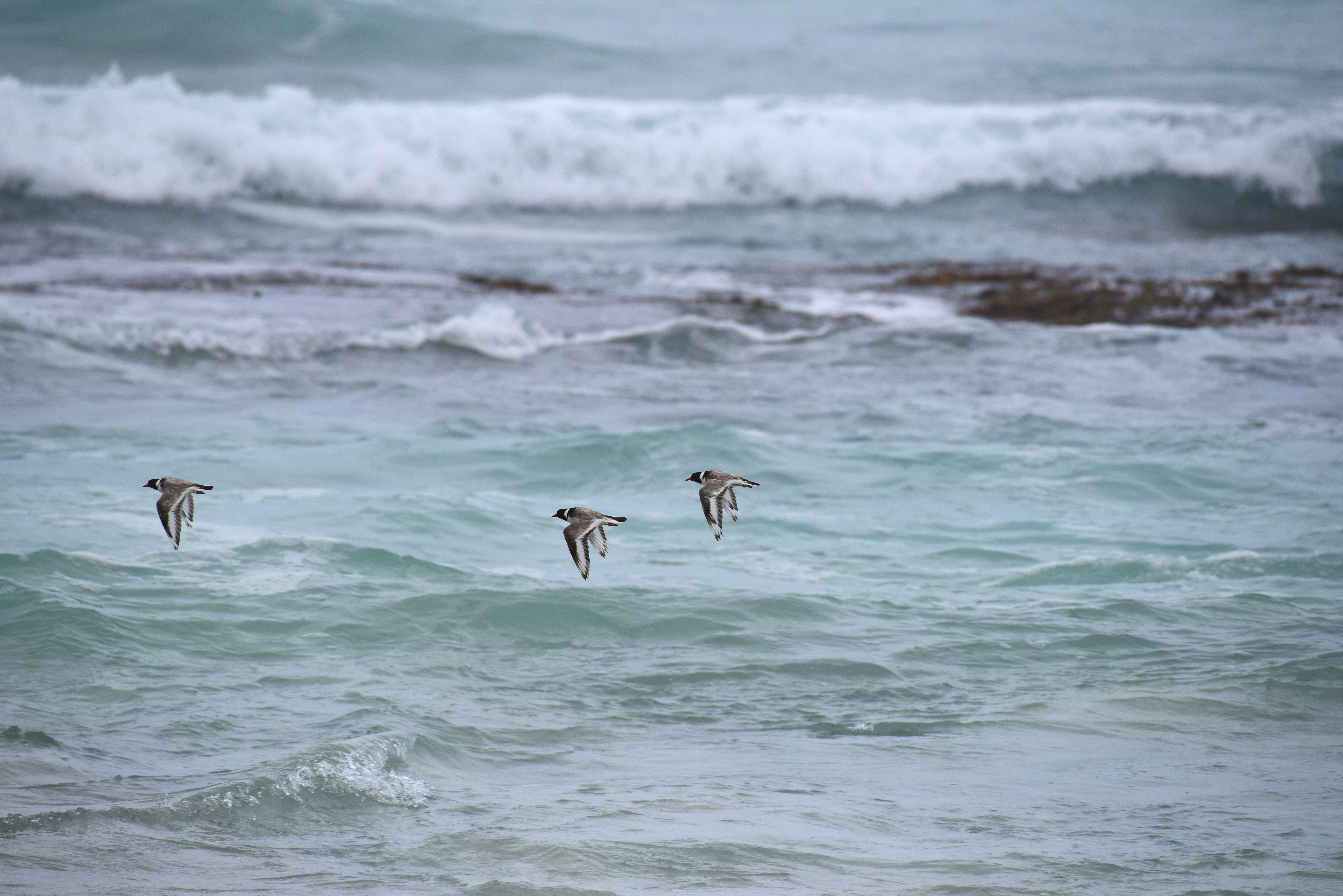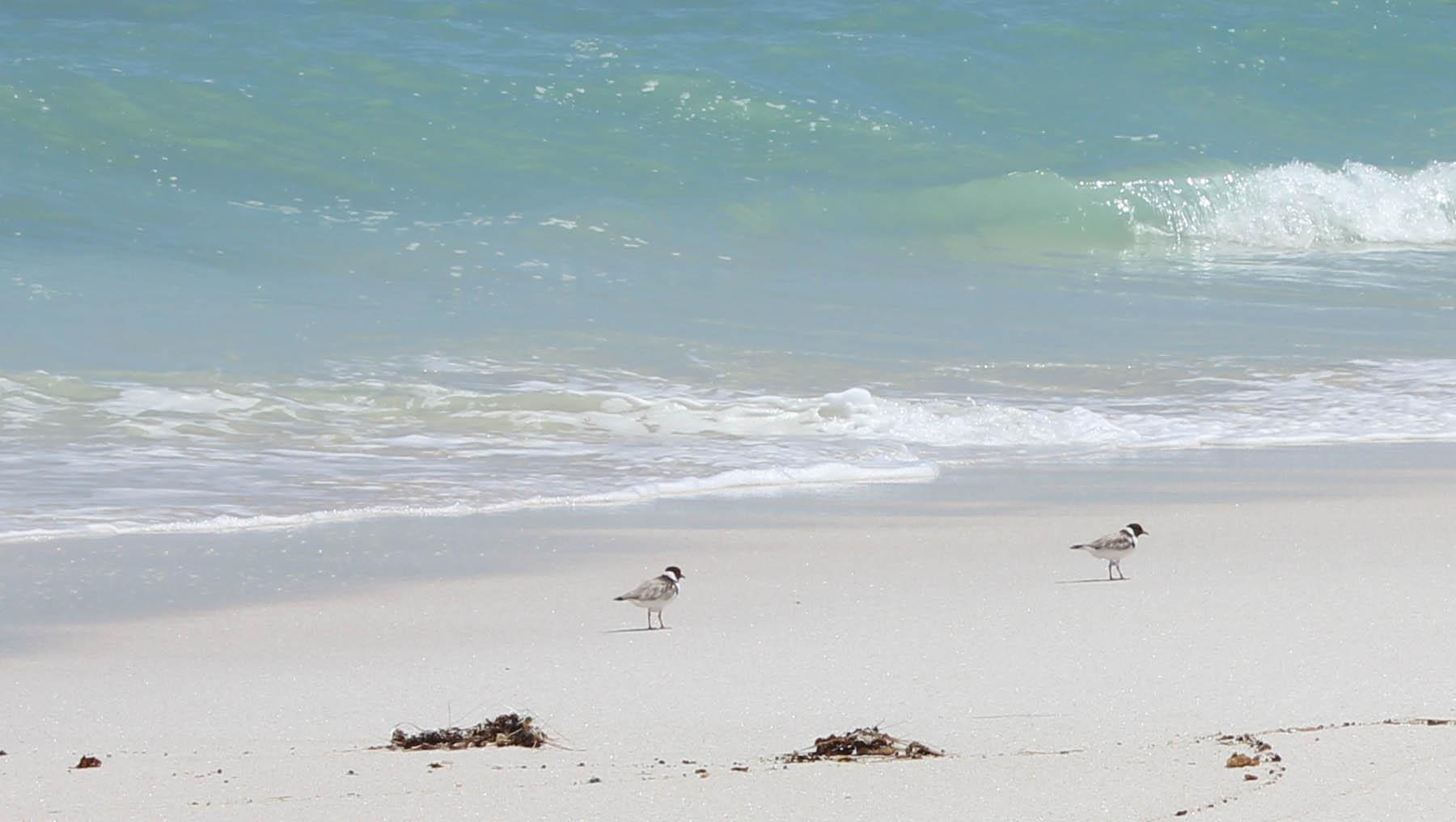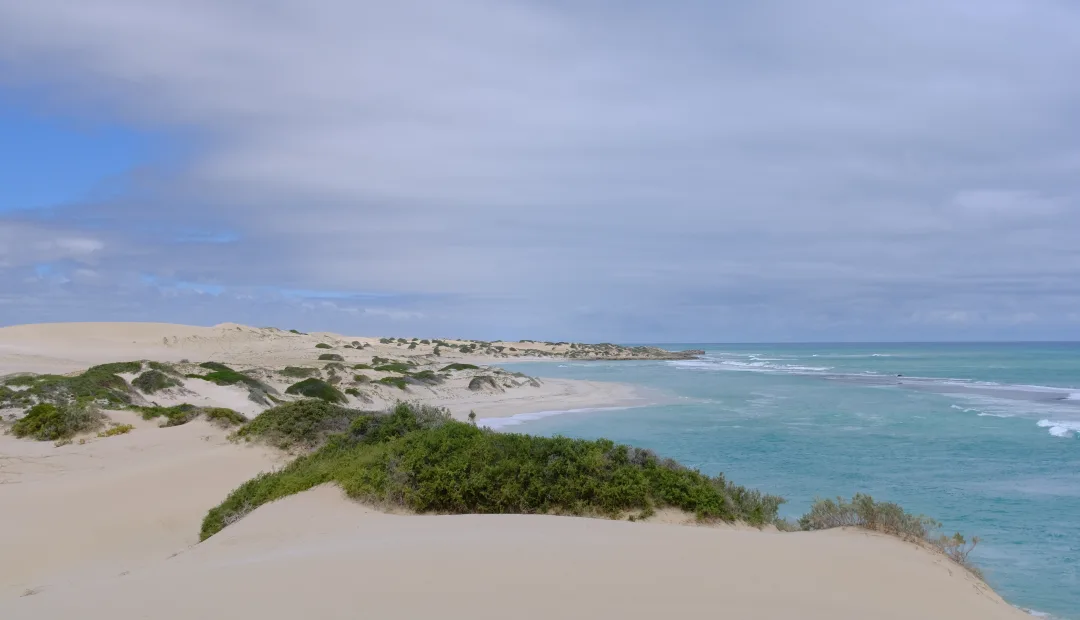Published:
Author:

The coast in the Alinytjara Wilurara (AW) region includes the section that belongs to the Yalata IPA, and a section managed by the National Parks and Wildlife Service.
This coastline includes the spectacular Bunda Cliffs at the Head of Bight, high-energy beaches highly prized by fishers, and the Yalata dune system, which is one of the largest sand masses in the state. The area also features many sites of cultural importance to Anangu. The region experiences high levels of tourism visitation, largely from ‘grey nomads’ with 4WD vehicles and caravans.

The coastal environment is remote and faces numerous challenges including:
- falling shorebird numbers, especially for beach nesting birds such as hooded plovers, due to ATV, off-road vehicles and foxes
- unregulated tourism visitation causing degradation due to off-track driving and camping and fishing activities. ATV/off road vehicles are also causing issues with dune erosion and threat to beach nesting shorebirds
- beach debris including ropes and plastics, discarded fishing gear – threats to marine mammals, seabirds and shorebirds
- feral predators attracted by fishing wastes
- Tourism activities along the Nullarbor by visitors has increased track proliferation and new tracks being opened in spite of track closures undertaken as part of an access management project some years ago.
- The track proliferation and presence of visitors is having:
- ecological impacts on the vegetation and raptor birds along the clifftops (ie raptor nests along clifftops being disrupted and abandoned)
- cultural impacts due to inappropriate visitations of sites (eg Merdayerrah Sandpatch and Nullarbor caves with no permits or cultural approvals).

Because the Alinytjara Wilurara Landscape Board (AWLB) is not levy funded, it has not had flexibility in funding for any coastal work since 2018 after 10 years of successful coastal grants funded by the Australian Government. Since 2018, AWLB’s work in the region has been limited to annual shorebird surveys, which have taken place since 2008, with the exception of 2020, due to COVID-19.
AWLB has a long and well-established partnership working together with the Yalata Community to reduce threats along the shorebird breeding grounds. This has included creating and erecting signage to inform visitors about why and how to minimise their impact, collection of litter and marine debris, construction of facilities that promote better disposal of pest-animal-attracting waste, and integrating of traditional ecological knowledge and western science. Effective predator control remains key to increasing the chances of successful breeding.
In previous years, AWLB has worked with Yalata Rangers on track rationalisation, reducing the number of informal 4WD tracks that have developed over the years to minimise damage to the fragile dune system.
Yalata Community is ready, willing and able to do more to protect fragile coastal habitat in their region, after several years without funding for such projects.
We’ve got to keep working on protecting the beach nesting birds in this area, otherwise it’s going to be pretty bleak for these little guys. With beach debris, human activity and feral predators attracted to fishing waste, we’re putting up a lot of obstacles to their success on the beaches, so over the next few years we need to do more to protect the hooded plover and other beach nesting birds.
Brett Backhouse, AWLB Regional Ecologist
The most notable species monitored in the shorebird surveys is the Hooded Plover, a priority listed threatened species. Unfortunately, our survey data shows the numbers in the region have reduced by half in the past 15 years.
Aside from actively seeking and recording numbers and breeding behaviours the surveys also assess the impact and nature of threats.
Animal tracks provide a clear indication of the presence of predatory species – of the 16 tracks noted within 100 m of the target species, 12 were from Red Fox. Numerous vehicle tracks were also recorded, and beach debris noted across all transects.
In spite of track rationalisation work done in previous years, the remoteness of the area and a lack of resources to police it has meant that visitors to the coast have continued to create informal tracks through the dune system.
Conservation along the Yalata coast is carried out by Alinytjara Wilurara Landscape Board, Yalata Rangers, National Parks and Wildlife Service



